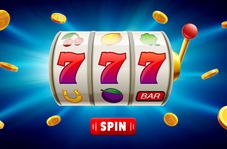Slot machines were introduced in the waning years of the 19th century and by the first decade of the 20th century, the “one-armed bandit” had become popular. Slot machines offer gamers a simple, no-stress game that requires little effort, no complicated rules and options to achieve lucrative payouts.
In the early days, the machines were three-reel mechanical devices but over the years the slot machine industry evolved. Today online slots players have their choice of games with dozens or even hundreds of paylines, interactive features, special effects, jackpots, storylines and bonus rounds.
Much of the change is due to the introduction of five-reel and six- and seven-reel (rare, but they do exist) machines. Once you understand a little more about the different types of slots it will be easy to find the slot machine that fits your individual needs and preferences.
General Information
First, it’s a good idea to get some general information about slot machines:
Reels
Slots can have three, five, six or (rarely) seven reels. Three reel slots are “classic slots” while the other types of slot machines are “video slots”. The slot machine’s reel is a vertical image. That image spins on the slot machine’s screen and when the reels stop spinning, the images that appear are those that determine whether or not a “win” has occurred. When three or more of a specific combination of those symbols lines up, you win a payout.
The payout is determined by the symbols that line up on the machine. Slot machines have “high payout symbols” and “low payout symbols.” So the exact payout for a matching combination depends on the particular symbols that emerge as a combination.
At one time, the reels were large metal hoops but now that slot machines are computer-based, they are simply images displayed on video screens.
RNGs
Today’s slots use random number generators to determine results. These RNGs, which are computer-based, makes every spin arbitrary so the outcome of the game is unsystematic. In this way, though the technology is different form old-time slots, the outcome of the game is determined by random numbers, regardless of how many reels are on the machine.
Stopping Points
After the player spins the reels they stop on either a symbol or on a blank space between the symbols. These points are called the slot machine’s “stops”. The odds are adjusted by a weighting system that determines the likeliness of a spin stopping on a particular stop.
Computerization
All modern slots are computerized. Computerization has changed the game because every symbol would have the same chance to appear in non-computerized slots while in computerized machines the odds are more complicated.
Thanks to computerization the slots machines have more symbols than they did before technology offered this option. Old slots reels only had 10 symbols on them but over time that increased. Today players have more opportunities than ever – sometimes up to 20 symbols on each reel -- to line up combinations and achieve payouts.
Microprocessors
The use of microprocessors is another element that has increased possible combination formations and gives slots players more opportunities to match symbols. Thanks to the microprocessor, a slot machine’s digital reel can consist of up to 256 symbols. That means that there are more than 16 million possible combinations.
Despite the large number of combinations, your chances of winning is not affected due to the fact that payouts are determined by the rate at which you hit the winning combinations. A winning combination with a high chance of being displayed results in a relatively small payout and vice versa.
Hit and payout frequency is set by the machine manufacturers. If the machine’s chip is changed the metrics are modified.
Payouts
A house edge is built into the RNG to ensure that the casino always has an edge over the player. That means that the payout is slightly lower than the actual winning odds.
Par Sheet
The par sheet is what is used to determine the odds. Each modern slot machine has a par sheet which specifies the weightings for every stop – including the blank stops. The par sheet displays the house edge and the machine’s odds. Gambling companies don’t reveal the information given on the par sheets which is designed for the casino’s internal accounting. That means that players don’t get clear information about the odds, actual house edge or payback percentages (the amount of money the slot machine will pay back over an unlimited number of spins.)
What Should You Choose?
When you sign into the online casino you’ll have your choice of a number of different types of machines. The old favorites are the three-reel machines and the newest, most interactive slots are the five reel machines.
There are six- and seven- reel slots but they’re complicated and found only at a few brick-and-mortar casinos.
3 Reel Slots vs 5 Reel Slots
The reel on the slot machine is a vertical section which rolls whenever the player pulls the lever/presses the “spin” button. A classic three-reel slot machine features three reels and one pay-line. They’re a bit slower but if you’re looking for a slot with a traditional look of classic fruit, letter and number symbols and not a lot of bells and whistles, that’s the one for you.
Most slot machines today are five-reel video slots. These slots feature interesting themes, mini bonus-games, engaging elements and well-paying prizes. They offer a mix of multipliers, options for wilds, special effects and more. There are five reel slots with standard 20 pay lines as well as those that feature dozens, even hundreds, of pay lines.
Betting options on both three-reel slots and five-reel slots range from low to high.




